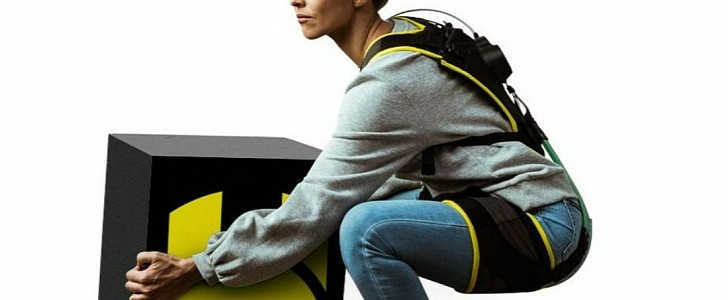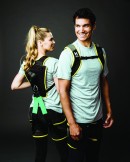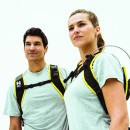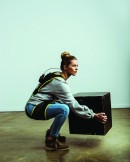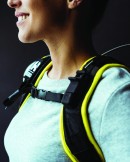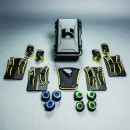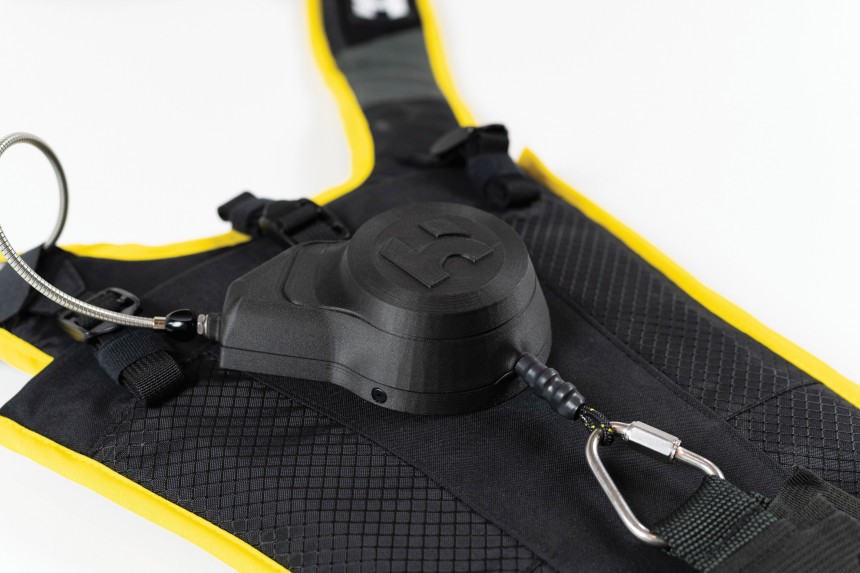Humans are needed to do just about anything. But the human body does have limits, like everything else on Earth. However, this doesn’t stop industry leaders from pushing forward, even when the workforce seems exhausted and nearly broken. One way this is being avoided is with exoskeletons.
Since we’re now living in an age where just about anything you dream can be created, some companies are hard at work helping overcome the human body’s limits, with technology. One crew doing this is HeroWear, with their freshest addition to the market, the Apex back-assist exosuit.
Like any other exoskeleton or exosuit, the Apex, too, is meant to help reduce stress and strain on the body it’s applied to. But what makes this exoskeleton so special is the fact that it includes no motors or electrical gear to make it function, leading to a suit that weighs only 3.4 lbs (1.55 kg). But those three pounds can reduce back strain by up to 75 lbs (34 kg). Time to find out how.
So that you may understand exactly what sort of device the Apex is, it also helps to know a bit about the team behind the design. Started by a group of scientists from Vanderbilt University, ranging in backgrounds from manufacturing and ergonomics to biomechanics (clearly) and design, the Apex is aimed at reducing back stress via principles the human body already employs.
The way it works is rather simple. By using passive-elastic bands, the Apex acts in unison with already present muscles groups that are responsible for bending and lifting. By working with these already existing muscles, lab results have shown that Apex reduces muscles force by up to 20% during lifting, and a max 40% reduction while bending, all from just a few elastic bands.
The design itself is rather simple. Because it is a textile-based exosuit, full range of motion is its game. There is no hard gear to impede normal movement. Around the legs, two supports, that act as the base for the bands, are set onto the wearer. On the upper body, a backpack-like support is fit to the wearer and held in place with a support strap like the ones you’d find on rugged backpacks. And finally, connecting the two segments, the elastic bands. Tighten everything to your dimensions and, get to work!
One benefit behind this backpack-like device, is that the Apex offers a feeling most people are used to, making it quite comfortable to wear, not to mention that it’s interference free, meaning it won’t affect the way you move around a space. You can jump, run, walk, bend, probably even backflip (I don’t recommend the last one). Because of the easy-on and easy-off design, the Apex is suitable for an array of body sizes, meaning that men, women, and even young adults can fit it to their body; one size fits all.
Now, what does this mean for industry leaders? Well, a couple of things. The first is that of having workers that are less fatigued and able to work easier and for longer. A person that isn’t fatigued, generally tends to be happier and works better, leading to a higher production output.
If you think that this is something I just pulled out of my hat, it isn’t. Companies like Ford and Daimler already use the Chairless Chair as a key component in reducing worker fatigue. That design is a bit different than the Apex, but it is still focused on making work less demanding on the body.
Another benefit of such devices is that of having workers that are less prone to injury, ensuring they come to work, day after day after day after day after... you get the idea. This means higher product output, less money spent on sick pay, and less money spent on doctors, a general win win for everyone.
However, if you own a hive and want to equip your worker bees with the Apex pollen-carrying booster, then you’ll have to dip into the old honey jar and dish out at least $1,200 (€1,005 at current exchange rates) a piece for one of these. Oh, and according to the manufacturer’s website, that’s a starting price.
But happier workers, less injury, less medical costs, higher product outputs, the list goes on, are all reasons why products like these are seeing an explosion on the market. Honestly, keep them coming, because who the heck likes hospitals?
Like any other exoskeleton or exosuit, the Apex, too, is meant to help reduce stress and strain on the body it’s applied to. But what makes this exoskeleton so special is the fact that it includes no motors or electrical gear to make it function, leading to a suit that weighs only 3.4 lbs (1.55 kg). But those three pounds can reduce back strain by up to 75 lbs (34 kg). Time to find out how.
So that you may understand exactly what sort of device the Apex is, it also helps to know a bit about the team behind the design. Started by a group of scientists from Vanderbilt University, ranging in backgrounds from manufacturing and ergonomics to biomechanics (clearly) and design, the Apex is aimed at reducing back stress via principles the human body already employs.
The design itself is rather simple. Because it is a textile-based exosuit, full range of motion is its game. There is no hard gear to impede normal movement. Around the legs, two supports, that act as the base for the bands, are set onto the wearer. On the upper body, a backpack-like support is fit to the wearer and held in place with a support strap like the ones you’d find on rugged backpacks. And finally, connecting the two segments, the elastic bands. Tighten everything to your dimensions and, get to work!
One benefit behind this backpack-like device, is that the Apex offers a feeling most people are used to, making it quite comfortable to wear, not to mention that it’s interference free, meaning it won’t affect the way you move around a space. You can jump, run, walk, bend, probably even backflip (I don’t recommend the last one). Because of the easy-on and easy-off design, the Apex is suitable for an array of body sizes, meaning that men, women, and even young adults can fit it to their body; one size fits all.
If you think that this is something I just pulled out of my hat, it isn’t. Companies like Ford and Daimler already use the Chairless Chair as a key component in reducing worker fatigue. That design is a bit different than the Apex, but it is still focused on making work less demanding on the body.
Another benefit of such devices is that of having workers that are less prone to injury, ensuring they come to work, day after day after day after day after... you get the idea. This means higher product output, less money spent on sick pay, and less money spent on doctors, a general win win for everyone.
But happier workers, less injury, less medical costs, higher product outputs, the list goes on, are all reasons why products like these are seeing an explosion on the market. Honestly, keep them coming, because who the heck likes hospitals?
